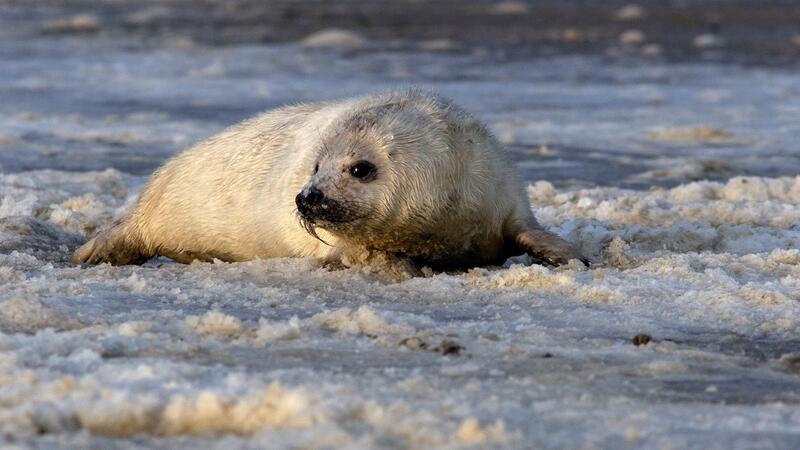Coordinated surveys confirm continuous growth of grey seals in the Wadden Sea

The grey seals inhabiting the Wadden Sea and Helgoland are an integral part of a broader North Sea population. Similar to other regions in the North Sea, numbers continue to grow. In the past five years, the number of grey seal pups in this region has shown an average annual growth rate of 13 percent, while the number of adult animals counted during the moult grew by 12 percent annually. These are the results of the “Grey Seal Surveys of the Wadden Sea and Helgoland 2022-2023” published in the framework of the Trilateral Cooperation on the Protection of the Wadden Sea.
On an annual basis, the trilateral Expert Group on Marine Mammals, consisting of researchers and site managers from Denmark, Germany, and the Netherlands, conducts coordinated aerial surveys of grey seals encompassing the entire Wadden Sea World Heritage Site as well as the island of Helgoland (Schleswig-Holstein). On Helgoland the counts are done on the ground, recently supported by drone flights. During the peak of the winter pupping season spanning from November 2022 to January 2023, a total of 2,515 grey seal pups was counted in the Wadden Sea and on Helgoland. With 1,436 pups, the majority of newborns were seen in the Dutch Wadden Sea, marking a 15%-increase compared to the previous breeding season. On Helgoland, 684 grey seal pups were observed, a plus of 12 percent. Lower Saxony experienced a 9%-decline in pup numbers, tallying 393 pups. However, here some parts of the breeding habitat could not be counted, due to bad weather at the time of counts, which may have led to lower numbers. Few grey seals breed in the eastern and northern part of the Wadden Sea, and thus only one pup was observed in Schleswig-Holstein and Denmark, respectively.
Counts of adult grey seals are conducted in March-April, when the adult Wadden Sea grey seals spend more time hauled out on sandbanks during the peak of the annual moult. This year, the experts counted a total of 10,544 grey seals, representing an increase of 18 percent compared to last year. “This increase follows a slight drop in numbers observed from 2021 to 2022, emphasising the need to interpret the counts looking at several years rather than one”, explains Jessica Schop, first author of the report.
Approximately 70 percent of the adult grey seals were recorded in the Dutch Wadden Sea. The counts tallied 7,613 grey seals in this region alone. With 1,420 grey seals Helgoland constituted 13 percent of the overall count. Lower Saxony and Hamburg recorded 11 percent of the grey seal population, accounting for 1,190 individuals. In the Wadden Sea area of Schleswig-Holstein, 176 individuals were counted. In Denmark 145 grey seals were observed.
Grey seals are the largest predators along the Wadden Sea coast and, like harbour seals, one of the iconic species of the region. Although the Wadden Sea Seal Agreement (WSSA) under the auspices of the Convention of Migratory Species in Bonn does not cover the grey seals, they do benefit from their inclusion in the related Seal Management Plan, which is updated every five years and covers also the grey seals. This includes the annual counts, which are required to identify trends in seal numbers and variations in their geographical distribution across haul-out sites in the Wadden sea countries. These data help inform comprehensive conservation and management of the grey seal population. CWSS acts as the secretariat of WSSA.
